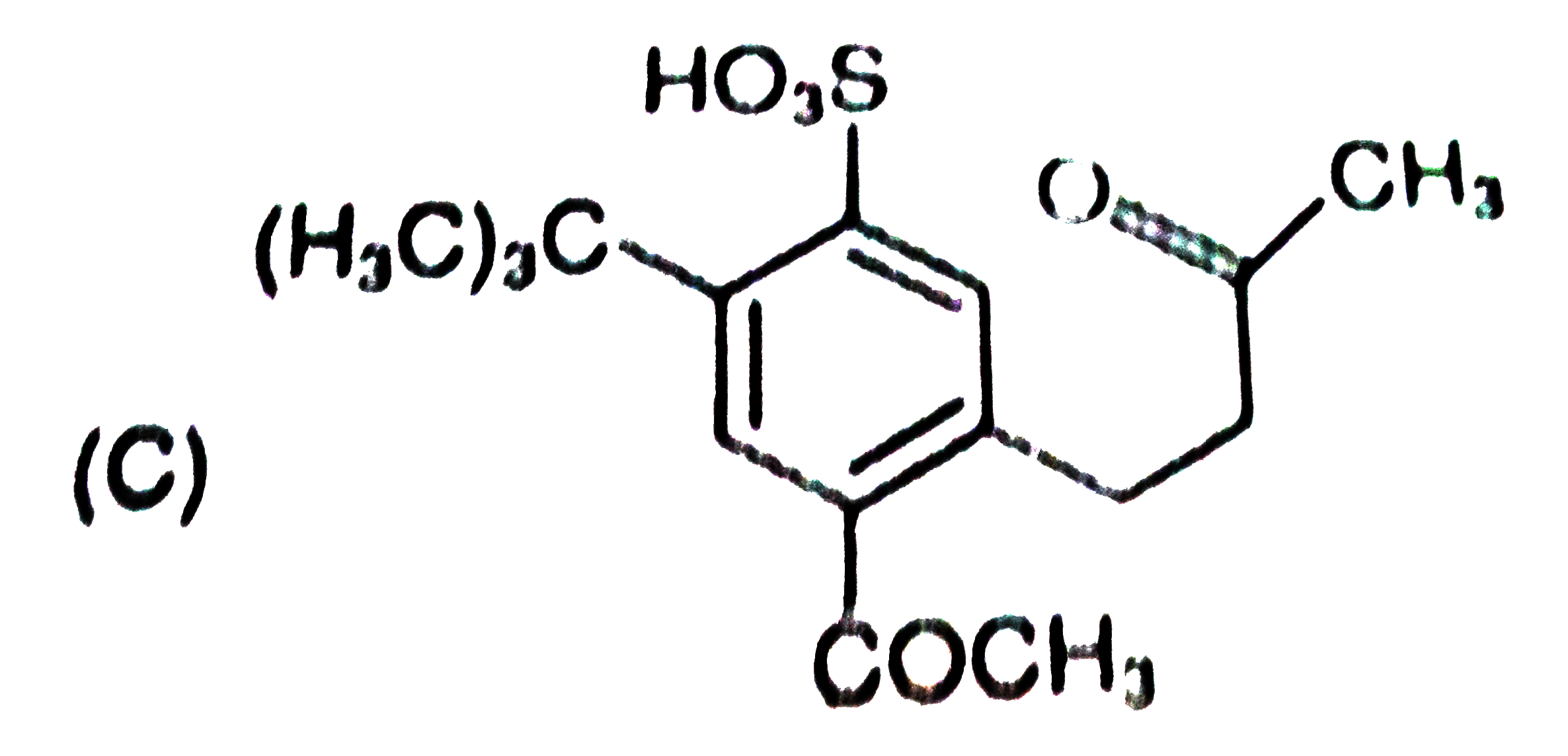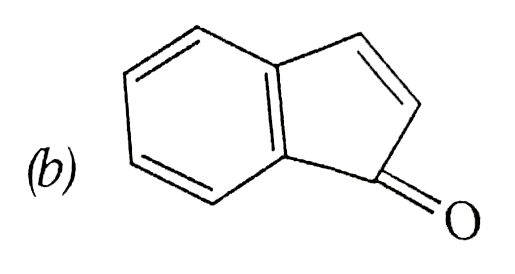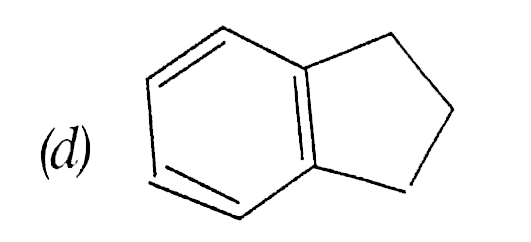The reaction of compounf P with CH3MgBr (excess) in (C2H5_(2)O followed by addition of H2O give Q the compound Q on treatment with H2SO4at 0∘ C gives R. the reaaction of R with CH3COCl in the presence of anhydrous AlCl3inCH2Cl2 followed by treatment with H2O produces compound S. [Et in compound P is ethyl group] The product S is The product S is





The correct Answer is:B
Step by step video, text & image solution for The reaction of compounf P with CH_(3)MgBr (excess) in (C_(2)H_(5)_(2)O followed by addition of H_(2)O give Q the compound Q on treatment with H_(2)SO_(4)at 0^(@) C gives R. the reaaction of R with CH_(3) COCl in the presence of anhydrous AlCl_(3)"in" CH_(2)Cl_(2) followed by treatment with H_(2)O produces compound S. [Et in compound P is ethyl group] The product S is The product S is by Chemistry experts to help you in doubts & scoring excellent marks in Class 11 exams.
Topper's Solved these Questions
- BOOK - RESONANCECHAPTER - AROMATIC COMPOUNDS EXERCISE - PART-II JEE MAIN19videos
AROMATIC COMPOUNDS
- BOOK - RESONANCECHAPTER - AROMATIC COMPOUNDS EXERCISE - JEE(MAIN) ONLINE PROBLEM16videos
AROMATIC COMPOUNDS
- BOOK - RESONANCECHAPTER - AROMATIC COMPOUNDS EXERCISE - PART IV- COMPREHENSION14videos
AROMATIC COMPOUNDS
- BOOK - RESONANCECHAPTER - ATOMIC STRUCTUREEXERCISE - PHYSICAL CHEMISTRY(ATOMIC EQUILIBRIUM)48videos
ATOMIC STRUCTURE
Similar Questions
Treatment of benzene with CO/HCl in the presence of anhydrous AlCl3/CuCl followed by reaction with Ac2O/NaOAc gives compound X as the major product. Compound X upon reaction with Br2/Na2CO3, followed by heating at 473 K with moist KOH furnishes Y as the major product. Reaction of X with H2/Pd−C, followed by H3PO4 treatment gives Z as the major product.
The compound Y isView SolutionTreatment of benzene with CO/HCl in the presence of anhydrous AlCl3/CuCl followed by reaction with Ac2O/NaOAc gives compound X as the major product. Compound X upon reaction with Br2/Na2CO3, followed by heating at 473 K with moist KOH furnishes Y as the major product. Reaction of X with H2/Pd−C, followed by H3PO4 treatment gives Z as the major product.
The compound Z isView Solution
Knowledge Check
- Question 1 - Select One
(CH)3)2C− MgBr reaction with H2O produced
A(CH3)2CHB(CH3)3CHC(CH3)3COHD(CH3)3OH - Question 2 - Select One
Treatment of benzene with C∅HCl in the presence of anhydrous AlCl3/CuCl followed by reaction with Ac2∅NaOAc gives a compound X. Reaction of X with H2/Pd/c followed by treatment with H3PO4 gives another compound Y. The compound Y is :
A B
B C
C D
D
- Question 3 - Select One
CH3−O−C(CH3)3 on reaction with CH3COCl in presence of AlCl3 gives (A) and C6H5−O−C(CH3)3 on reaction with cold HI gives (B0. The compounds (A) and (B) are :
AAB(CH3)3C−Cl(CH3)3C−IBABCH3Cl(CH3)3C−ICABCH3OHC6H5−IDABCH3COOCH3(CH3)3C−OH
Phenol on treatment with CO2 in the presence of NaOH followed by acidification produces compound X as the major product. X on treatment with (CH3CO)2O in the presence of catalytic amount of H2SO4 produces
View SolutionPhenol on treatment with CO2 in the presence of NaOH followed by acidification produces compound X as the major product. X on treatment with (CH3CO)2O in the presence of catalytic amount of H2SO4 produces
View SolutionThe compounds CH3−O−C3H7 and C2H5−O−C2H5 exhibit
View SolutionIn the reaction
CH3CH=O+AdryHCl−−−→CH3CH(OC2H5)2+H2O
The compound A isView SolutionIn the reaction
CH3−C2H5∣C=O+HCN→AH2O+−−−→B
The compound B isView Solution

